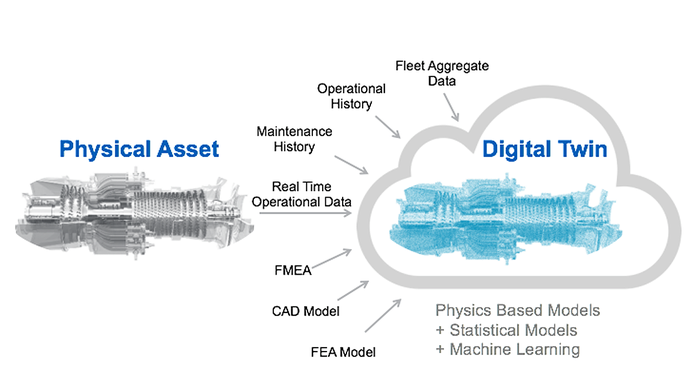The new digital twin (DT) approach in production and AM claims to optimise the value chains in various industry sectors, such as in automotive manufacturing and energy products. It can be understood as a digital representation of a physical asset, e.g. a substation. This digital picture of installed power equipment may be used to operate complex grid infrastructure more accurately. There are quite a few products and services available, but proof is required of its trade-off for implementation in TSOs’ core business.
Technology Types
There are three main purposes to implement a DT:
- A Product Digital Twin – to guarantee reliable design in product development and improvements.
- A Production Digital Twin – to improve production planning and manufacturing.
- A Performance Digital Twin – to capture, analyse and act on data while an asset is in operation.
From a TSO’s perspective, the Performance DT is most relevant. Here, an Asset Owner gathers the necessary data to feed modelling and simulation software solutions to support decision making at several operational levels, e.g. system operation or maintenance activities.

Another argument for implementing such a DT for several purposes is to have one sophisticated method for stacking and using data from various sources – therefore ensuring one ‘source of truth’ is available.
Components & enablers
The DT infrastructure consists essentially of 3 parts:
- The Engine is responsible for the operation of the central multi-user database as well as several data management functions.
- The installed sensors and corresponding interfaces are the components that obtain data and transfer within another.
- The implemented User Interface provides sufficient functionality, such as graphical data visualisation.
Advantages & field of application
The DT approach promises to improve the utilisation of data gathered from e.g. market participants and energy traders, generation units and power plants as well as the TSO’s grid infrastructure. It can be discussed as a useful tool to affect data-driven performance in future power grids; appropriately in Power System Operation and its grid planning or in Power System Economics and its local flexibility markets.
Technology Readiness Level
TRL Score 6 – Technology demonstration
Research & Development
The main developments have been promoted not academically but in industry sectors. Therefore, leading companies as Siemens AG and General Electric Corp. offer different products and software solutions to Asset Owners and other stakeholders.
Best practice performance
Together with Siemens AG, Fingrid introduced an electrical DT model (ELVIS) to affect their asset and operation management as well as infra-structure investment planning. Meanwhile, the DT model is being used to develop several investment scenarios considering different policy frameworks. In conclusion, the data collection and verification process takes less than 20% of the time that it used to take.
The American Electric Power (AEP) established a similar project to obtain a reduction of the time and costs associated with grid and market modelling efforts manually. Furthermore, an advanced data governance foundation to support its investment strategy was implemented.
Best practice application
References
N/A